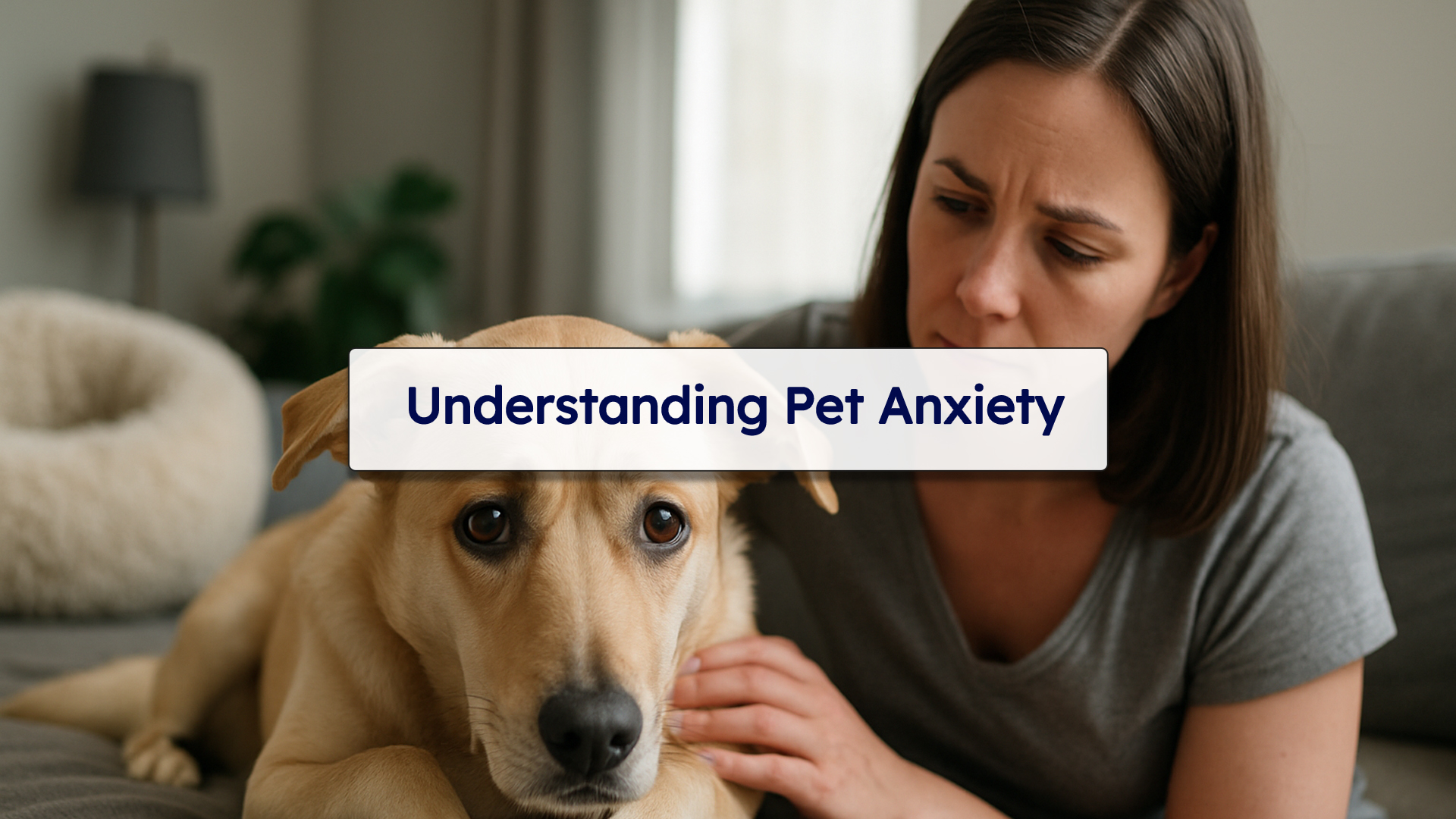Pets bring joy, companionship, and unconditional love into our lives—but just like humans, they can experience anxiety. Whether it’s triggered by separation, loud noises, changes in routine, or unfamiliar environments, pet anxiety can significantly affect your furry friend’s well-being. Fortunately, with awareness and proactive care, you can help your pet feel more secure and at ease.
What is Pet Anxiety?
Pet anxiety is a condition where animals exhibit signs of distress in response to specific triggers. It’s most commonly seen in dogs and cats, although it can affect other pets as well. Anxiety can be acute (short-term) or chronic (ongoing), and it may manifest in various ways.
Common Causes:
- Separation: Being left alone for extended periods.
- Loud noises: Thunderstorms, fireworks, and household appliances.
- Changes in environment: Moving to a new home, new family members, or travel.
- Lack of socialization: Especially in younger pets.
- Past trauma: Abuse, neglect, or abandonment.
Signs Your Pet Might Be Anxious
Recognizing the signs of anxiety is the first step toward helping your pet. Symptoms vary depending on the animal and the severity of the anxiety but may include:
- Excessive barking or meowing
- Destructive behavior (chewing, scratching furniture)
- Pacing or restlessness
- Trembling or hiding
- Aggression or unusual clinginess
- Accidents in the house, even if previously house-trained
- Loss of appetite
How to Help an Anxious Pet
Helping a pet cope with anxiety involves understanding their needs, providing comfort, and sometimes seeking professional support. Here are practical ways to support your pet:
1. Create a Safe Space
Designate a calm, quiet area where your pet can retreat during stressful situations. Fill it with comforting items like their bed, toys, and a piece of your clothing.
2. Stick to a Routine
Animals thrive on routine. Feeding, walking, and playtime should happen at consistent times to provide a sense of stability.
3. Provide Mental and Physical Stimulation
Interactive toys, puzzle feeders, and regular exercise help reduce stress by keeping pets engaged and burning off nervous energy.
4. Use Calming Aids
Products like pheromone diffusers, anxiety wraps (e.g., ThunderShirt), and calming treats can provide temporary relief. Always consult your vet before trying new products.
5. Practice Gradual Desensitization
If your pet fears certain sounds or being alone, gradually expose them to these triggers in controlled, positive ways—rewarding calm behavior to help build tolerance over time.
6. Consider Professional Help
If anxiety is severe, a vet or certified animal behaviorist can develop a tailored treatment plan. In some cases, medication may be recommended.
Patience and Compassion Go a Long Way
Dealing with pet anxiety can be challenging, but your understanding and support are crucial. With time, patience, and the right strategies, most pets can learn to manage their anxiety and enjoy a happier, more relaxed life.


